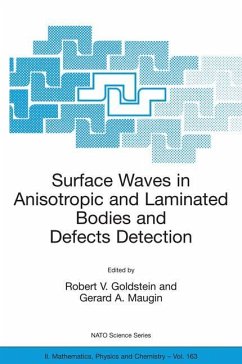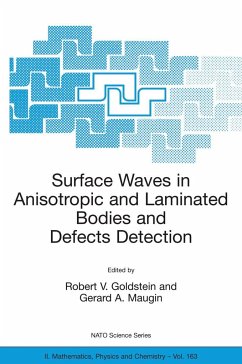
Bulk Crystal Growth of Electronic, Optical and Optoelectronic Materials

PAYBACK Punkte
161 °P sammeln!
Several multibillion/million US$ industries are based on bulk-grown crystals of both semiconductors and oxides/fluorides. These industries include information technology, telecommunications, infrared imaging (both military and civilian), lasers, medical imaging, high-energy physics and solar cells. Bulk-grown crystals have, in some cases, been commercially available for over 50 years, and in that time average sizes have increased greatly, leading to lower unit costs, consequently lower device costs and hence greater consumer benefit. These improvements have arisen mainly through an increase in...
Several multibillion/million US$ industries are based on bulk-grown crystals of both semiconductors and oxides/fluorides. These industries include information technology, telecommunications, infrared imaging (both military and civilian), lasers, medical imaging, high-energy physics and solar cells. Bulk-grown crystals have, in some cases, been commercially available for over 50 years, and in that time average sizes have increased greatly, leading to lower unit costs, consequently lower device costs and hence greater consumer benefit. These improvements have arisen mainly through an increase in the understanding of the basic scientific principles on which bulk crystal growth is based, work that has included theoretical modelling both with and without computers. This book covers the bulk growth of semiconductors, i.e. silicon, gallium arsenide, cadmium mercury telluride, indium phosphide, indium antimonide, gallium nitride, cadmium zinc telluride, a range of wide-bandgap II-VI compounds, diamond and silicon carbide, and a wide range of oxides/fluorides (including sapphire and quartz) that are used in many industrial applications. A separate chapter is devoted to the fascinating field of growth in various forms of microgravity, an activity that is approximately 30-years old and which has revealed many interesting features, some of which have been very surprising to experimenters and theoreticians alike. This book will appeal to all those graduate students in the physical sciences who have an interest in materials and to workers in all the relevant fields discussed in the book who wish to remain up-to-date in their own areas and learn how their colleagues in other materials systems cope with common and unique problems. The latter will include workers utilising various epitaxial growth methods, as many of the materials covered here are used as substrates for epitaxy.












